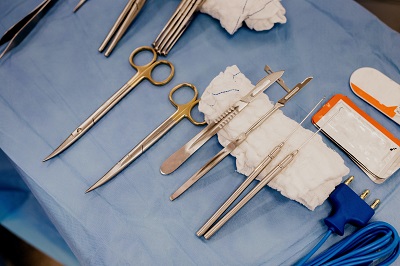After obtaining Class I medical device registration with Brazil ANVISA, there are several important post-registration considerations to maintain compliance and ensure the device remains safely available in the Brazilian market. Here’s a summary of key post-registration obligations and best practices:
1. Post-Market Surveillance and Vigilance (RDC 67/2009)
- Ongoing Monitoring: ANVISA requires manufacturers and Brazilian Registration Holders (BRH) to continuously monitor the safety and performance of registered medical devices.
- Adverse Event Reporting: Any adverse events, complaints, or product malfunctions must be reported to ANVISA as soon as they are identified. This is critical for identifying and mitigating any emerging risks.
- Complaint Management: Establish a system to manage and respond to customer complaints promptly, documenting corrective and preventive actions (CAPA) as necessary.
2. Record-Keeping and Document Retention
- Documentation: Maintain copies of all registration documentation, including the technical file, risk management documents, and other supporting materials.
- Retention Period: It’s recommended to keep these records for the lifecycle of the device or as specified by ANVISA, to ensure traceability and quick access in case of regulatory inspections or updates.
3. Labeling and Language Compliance (RDC 185/2001)
- Label Updates: Ensure that any updates to device labeling, instructions for use, or marketing materials are translated into Portuguese and compliant with RDC 185/2001 requirements.
- Label Consistency: Keep labeling consistent with the registered information. Any changes in the device's intended use, specifications, or warnings may require prior approval from ANVISA.
4. Registration Renewal and Changes
- Registration Validity: Class I device registrations in Brazil generally have a validity period of 5 years. The registration must be renewed before expiration to continue marketing the device.
- Registration Updates (RDC 102/2016): Any significant changes to the device—such as changes in manufacturing processes, design, or intended use—require ANVISA notification or, in some cases, a new registration.
- Minor vs. Major Changes: Understand the distinction between minor modifications (which may only require a notification) and major changes that could necessitate a full review by ANVISA.
5. Quality Management System (QMS) Maintenance
- QMS Compliance: If your device is ISO 13485 certified, maintaining QMS compliance is essential. Regular audits and updates to your Quality Management System will ensure that manufacturing and quality control standards continue to meet regulatory expectations.
- Continuous Improvement: Address any non-conformities, improve processes, and ensure that any CAPA actions taken during post-market surveillance are documented and implemented effectively.
6. Local Representation and Communication with ANVISA
- Brazilian Registration Holder (BRH): Ensure that your appointed BRH is proactive and maintains good communication with ANVISA. They are responsible for acting on behalf of the manufacturer for all regulatory communications, post-market activities, and adverse event reporting.
- Timely Response: Respond to any ANVISA requests promptly. If additional data, clarifications, or corrective actions are requested, coordinate with the BRH to provide the necessary information.
7. Product Recall and Field Safety Actions
- Recall Procedures: Have a recall procedure in place in case any safety or compliance issues are identified that would require the device to be pulled from the market. This procedure should include notifying ANVISA and informing users of the recall.
- Field Safety Corrective Actions (FSCAs): If an issue arises that affects device safety or effectiveness, a Field Safety Corrective Action plan must be implemented and communicated to ANVISA and affected users.
8. Renewals and Cost Considerations
- Registration Renewal: Prepare for registration renewal well before the 5-year expiration date, ensuring all required documentation and fees are in order to avoid lapses in registration.
- Cost Planning: Be prepared for costs associated with maintaining the device on the market, such as renewal fees, QMS audits, and potential re-registration fees if there are significant changes to the device.
9. Compliance with Brazilian and International Standards
- Standards Updates: Stay updated on changes to relevant standards, such as ISO 13485 (QMS), ISO 14971 (risk management), and Brazilian regulations that impact device compliance and post-market obligations.
- Adapt to New Requirements: Any updates in local or international standards should be incorporated into device quality and risk management practices.
10. Product Improvement and Innovation
- Continuous Improvement: Engage in ongoing product evaluation and improvement based on user feedback, complaint analysis, and new scientific evidence.
- Device Innovation: If the device undergoes significant design changes or new features are added, you may need to re-register or amend the registration with ANVISA.
Summary Checklist of Post-Registration Considerations:
- Post-Market Surveillance - Monitor safety and report adverse events.
- Document Retention - Keep records accessible and complete.
- Labeling Updates - Ensure labeling complies with Portuguese requirements and is updated as needed.
- Registration Renewal - Renew registration within 5 years.
- QMS Maintenance - Continue quality management and regular audits.
- Local Representation - Ensure proactive communication through the BRH.
- Recall Preparedness - Have procedures for recalls and corrective actions.
- Cost Planning - Budget for renewals and associated fees.
- Standards Compliance - Keep updated on relevant Brazilian and international standards.
- Product Improvement - Improve based on market feedback and innovation.
These post-registration steps are crucial for maintaining regulatory compliance, ensuring the device's continued safety and effectiveness, and fostering trust with healthcare professionals and patients in Brazil.

Contact Us:
Whatsapp or Wechat:+86 15816864648;email address:hito.lin@grzan.cn
.png)
.jpg)

.png)

.png)